|
FIELD NOTE:
|
| PLACE: |
CORREGIDOR |
DATE: |
20 AUGUST 2009 |
| LOCALE: |
BATTERY GRUBBS |
| OBSERVATION: |
THE
GUNS DIDN'T JUMP |
| BY: |
TONY
FEREDO |
| |
REF: TF/100120 |
| |
|
Ok guys, I was just
on the Rock days and we just had a discussion on Battery Grubbs and the
current state of both guns, comparing it with reports of its condition in
1942, 1945 and how it looks today. After going over the SOD, looks like the
earlier reports that both guns were disabled by removing the trunnion caps
and then firing the gun causing them to jump of the carriage seems to be not
true. Below is what I have unearthed.
The story of the removal of the trunnion cap and causing the guns to jump of
their carriage is based on the battery history that was compiled by Jim
Black. On the last paragraph it mentions: "The gun (sic) was further damaged
prior to surrender when both guns were fired with the trunnion caps removed,
causing the guns to jump completely out of their carriage."
However, based on a Japanese documentary that shows Japanese officers
inspecting the battery after the surrender of 1942 shows otherwise.
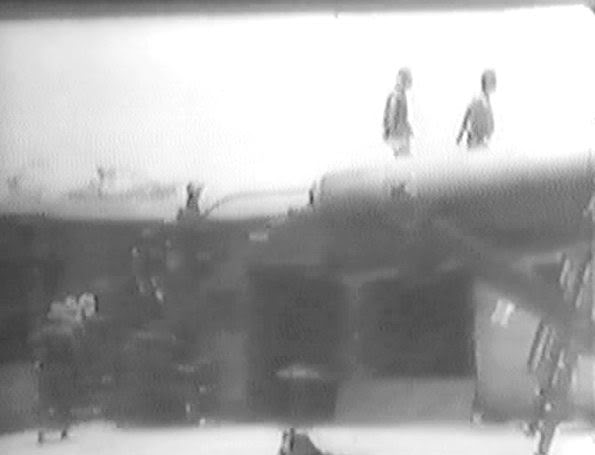
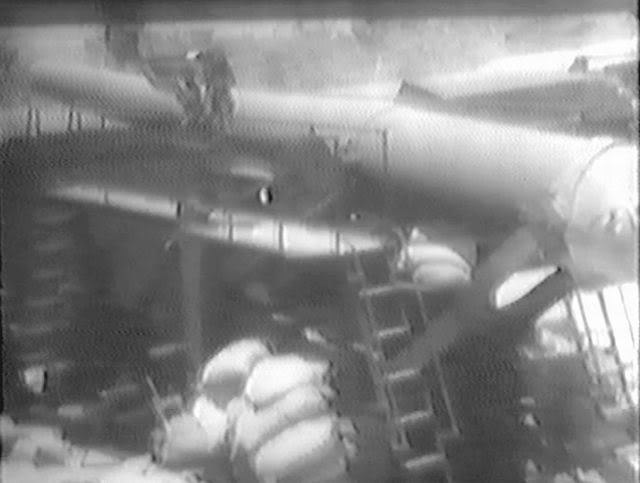
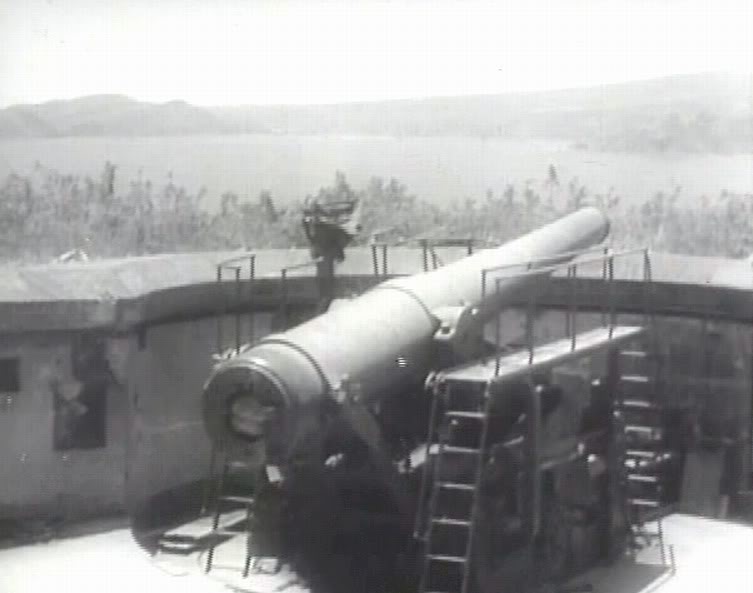
Notice that gun No.
2 has its breech block removed and that both guns are still emplaced in
their carriages during surrender.
This is further documented by the Japanese via their own report entitled
"Condition of Corregidor Island Defenses After May 6, 1942." a copy of which
was captured and secured by the Allied Translation and Interpreter Section,
South West Pacific Area in Hollandia on May 24, 1944. It was filed under
Enemy Publication No. 223
The Japanese report on the condition of Battery Grubbs are as follows:
"No. 1 gun
damaged by Japanese and needs major repairs. No. 2 gun destroyed by
Japanese gun fire and cannot be repaired. No damage done to gun by crew.
Can be used if minor repairs are done to the power system"
The Japanese may
have reversed the identity of the guns. As you can can see in the photo, gun
no. 1 is sandbagged and its rear end and breach covered by what looks like
tarpaulin. Gun No. 1 even before wartime had a mechanical defect on its
recoil so gun no. 2 was the one mostly used by C 91st PS.
It was said that the present condition of Gun No. 2 with it barrel lying
down on the loading platform was caused by either:
(1) the original
story that the gun was fired and jumped on the loading platform
(2) the modern day scrappers did the work.
Well, its neither.
Let us go back in 1945 when the Americans did their analysis on the
conditions of the Harbor Defenses of Manila and Subic Bays, titled: "Report
on War Damage to the Harbor Defenses of Manila and Subic Bays" dated October
6, 1945 which is also called by most as the Homer Case Report after Brig Gen
Homer Case of the 14th Anti-Aircraft Command who led the creation of the
said report.
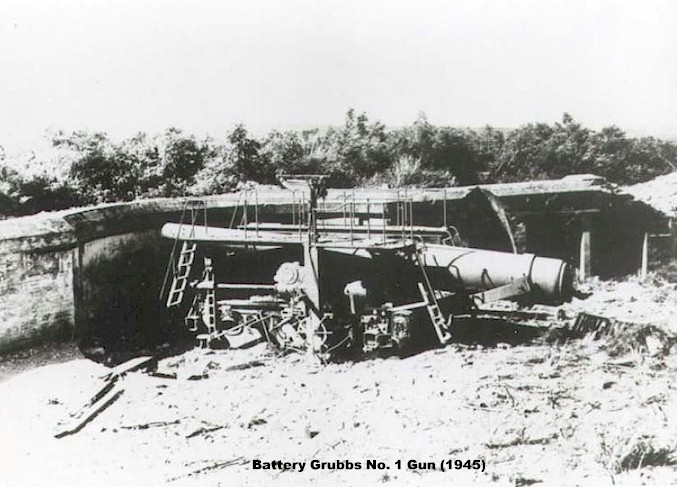
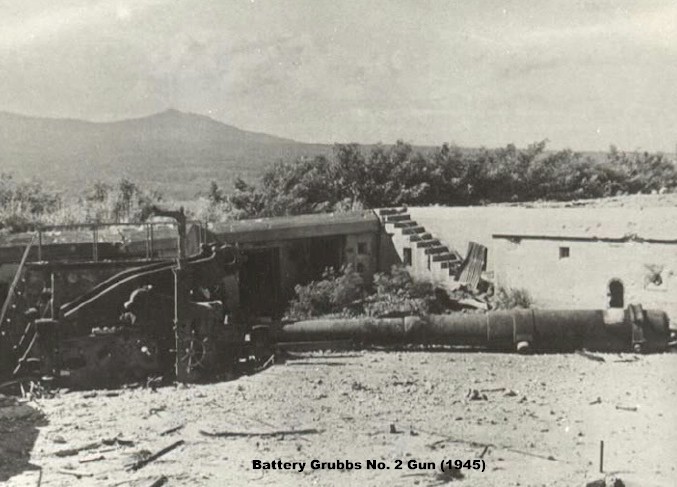
If you notice the
photos of Battery Grubbs of both guns in 1945, No. 2 is already in present
day position then. What the modern day scrappers did was to pick out the
carriage and the elevating band on the turret. Notice than gun No. 1 is
still in its carriage.
The Case reports also mentions the following:
Battery Grubbs.
- Two 10-inch guns on disappearing carriages first manned on 9 April by
part of Btry C, 91st CA (PS). On 11 April two bombs hit the emplacements
damaging the power plant and No. 1 tool room and bending overhead
ammunition tracks. The battery was shelled daily from 12-16 April from
Bataan. On 16 April No. 2 gun was knocked out of action by a direct hit
on the recoil cylinder. Since No. 1 gun was out of action due to a
mechanical defect the battery was abandoned on 16 April. Shells had
destroyed the battery commander's station in rear of the battery.
(Gulick-2; Datoc-4) There was no demolition on surrender. (App. F-8) The
prisoners of war did some work on No. 1 gun but it probably was not put
back into action. (Sense-9) No. 1 gun is in the loading position with
breech block intact. The gun does not appear to have suffered any direct
hit but the gun carriage is considerably damaged by fragments from a
large bomb explosion on the right of the parapet. (Figure 11) No. 2 gun
has been lifted from its trunnions and is now lying in the emplacement.
There are several small shell or bomb craters about the emplacement.
(Figure 12) The powder magazines have burned out but there are a
considerable number of projectiles in the storeroom. One shot hoist is
badly damaged but the other is unhurt. All tools have been removed.
So what about the
theories that the guns jumped out of their carriage and caused a spalling
effect underneath the loading platform for Gun. No. 2? Here is the analysis.
The spalling effect happened on the paint room .
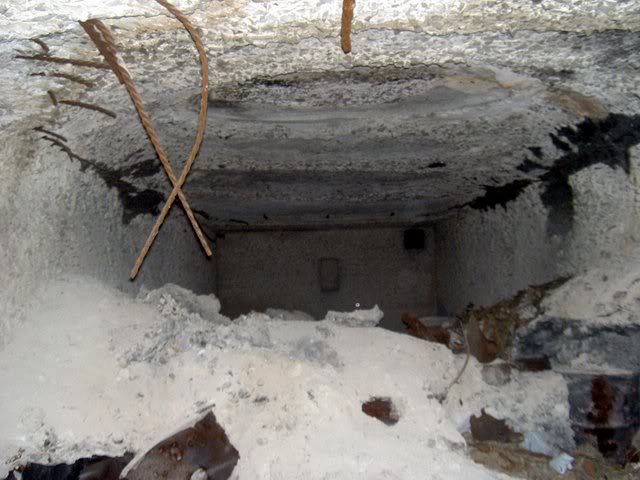
Upon observation on the location of the present day barrel of No. 2, it
aligns perfectly on top of the paint room. Since we know that the guns never
jumped out of their respective carriage, this was caused when the barrel was
dropped after it was removed from the carriage (possibly by POWs under
Japanese) which caused the spalling. The gun tube is also turned around with
the elevating band removed later by post war scrappers.
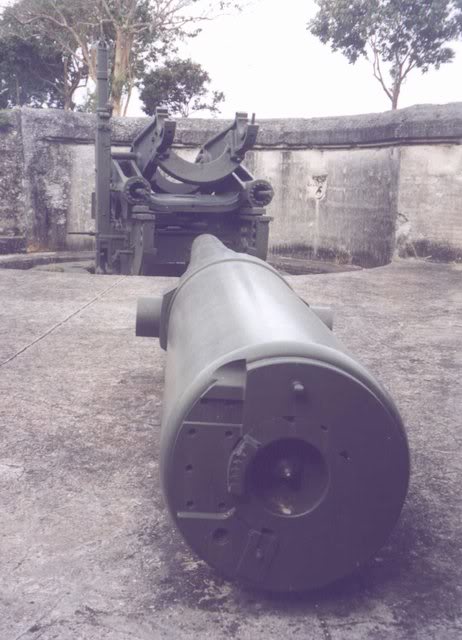
As for the guns jumping out of the carriage, this theory was made based on
the present day situation of Gun No.1. If you notice the trunnion bolt on
the right is bent
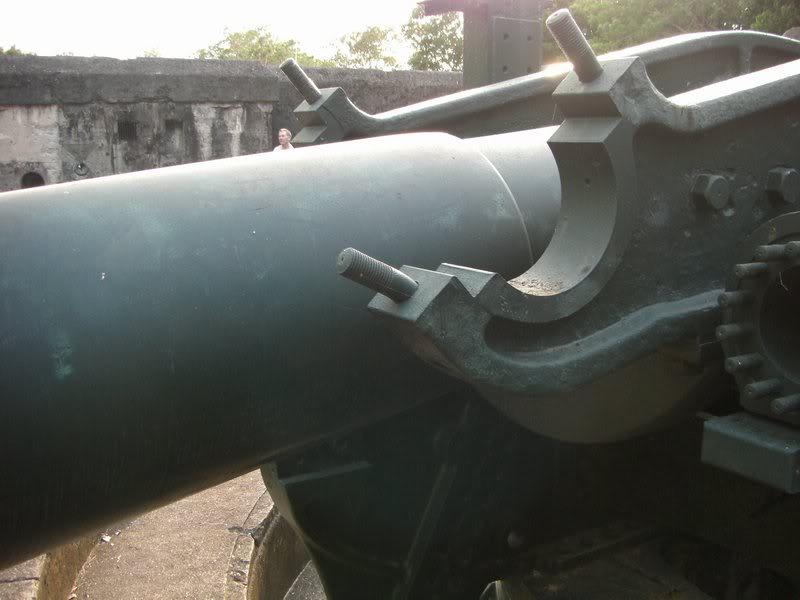
on a downward angle and the left side of the bolt was broken off. With the
gun in its current position, it did look like that it somewhat jumped off
the carriage.
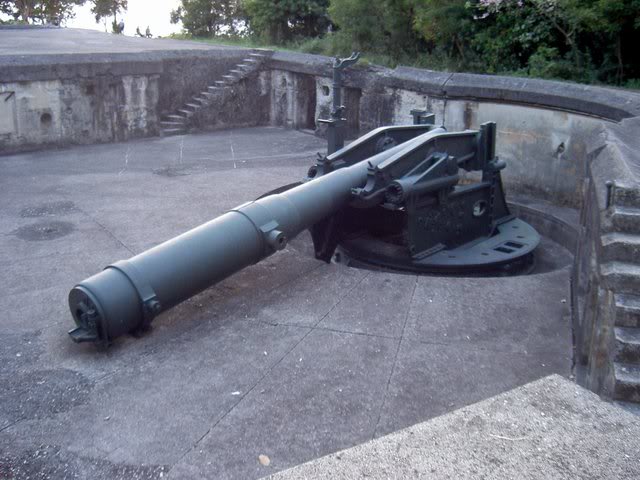
However, the 1942 and 1945 photos show you otherwise. The modern day
position is attributed to post war scrapping when they were removing the
barrel.
Both breech blocks are still in their guns. However the 1942 photo of Gun
No. 2 shows the breech absent. This may have been removed by the crew prior
to surrender but was placed back when the Japanese were trying to fix the
battery back into working condition.
FWIW,
TONY FEREDO |